Mike’s gearing up for the 99.1 PLR McDermott Chevrolet & Lexus Mike Lapitino Golf Classic and had to “test” John Daly’s Grip It & Sip It. Yum!
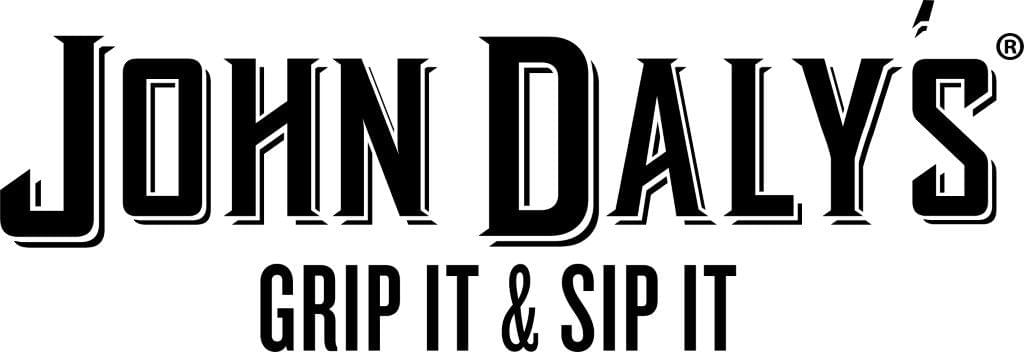

Mike’s gearing up for the 99.1 PLR McDermott Chevrolet & Lexus Mike Lapitino Golf Classic and had to “test” John Daly’s Grip It & Sip It. Yum!
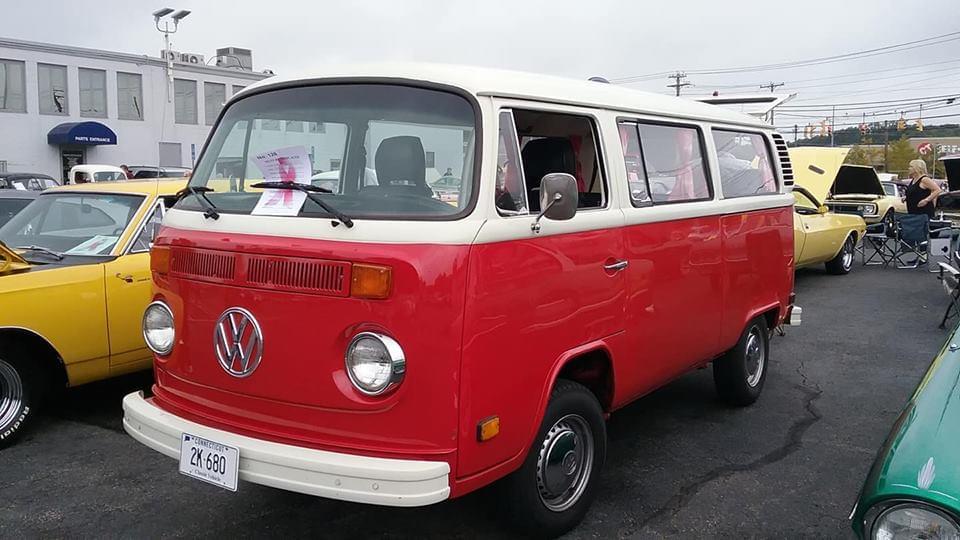
Car ( Or in this case, Bus ): Volkswagen Type 2 ( Bus )
Year: 1975
What makes it special: Volkswagen’s Type 2, known officially depending on body type as the Transporter, Kombi or Microbus, or, informally, as the Bus in the US or Camper in the UK, is a forward control panel van introduced in 1950 by the German automaker as its second car model, following and initially deriving from Volkswagen’s first model, the Type 1 Beetle, giving it the factory designation of Type 2. In late 1967, the second generation of the Volkswagen Type 2 (T2) was introduced. It was built in Germany until 1979. Models before 1971 are often called the T2a or “Early Bay”, while models after 1972 are called the T2b or “Late Bay”.
What made it famous: This second-generation Type 2 lost its distinctive split front windshield, and was slightly larger and considerably heavier than its predecessor. The T2b was introduced by way of gradual change over three years. The first models featured rounded bumpers incorporating a step for use when the door was open replaced by indented bumpers without steps on later models, front doors that opened to 90° from the body, no lip on the front guards, unique engine hatches, and crescent air intakes in the D-pillars. By 1974, the T2 had gained its final shape. In 1972, for the 1973 model year, exterior revisions included relocated front turn indicators, squared off and set higher in the valance, above the headlights. Also, square-profiled bumpers, which became standard until the end of the T2 in 1979, were introduced in 1973. The 1975 and later U.S. model years received Bosch L-Jetronic electronic fuel injection as standard equipment; the Type 4 engine was enlarged to 1.8 L and 50 kW DIN.
Why I would want one: Though they’re no street threat to anyone ( except maybe racing a jogger), they are just fun to drive, and make you smile when you see them.
Fun fact: Like the Beetle, the van has received numerous nicknames worldwide, including the “microbus”, “minibus,” and, because of its popularity during the counterculture movement of the 1960’s, “Hippie Van/Bus” has become its most popular.

6:00. When and where. The Connecticut toll plan revealed.
6:13. Sports powered by Road Ready Used Cars.
6:20. Ashley’s maid of honor speech.
6:30. A sample of what not to do.
6:40. We give Ashley our advice.
7:00. What the note said found on the abandoned dog found in Connecticut.
7:13. Sports powered by Road Ready Used Cars.
7:20. Dumb Ass News. A clown causes riot on a cruise ship.
7:30. Ron from “Skydive for Veterans” is on the phone to talk about the 4th Annual Freedom Jump on September 7th!
7:40. Chaz jumped out of an airplane! We have audio!
8:00. When and where. The new Connecticut toll fight revealed.
8:13. Sports powered by Road Ready Used Cars.
8:20 – 8:30. AJ takes the millennial quiz.
8:40. Phil’s review of Once Upon a time in Hollywood.
9:00. Brian Adams. Billy Idol.
9:13. Sports powered by Road Ready Used Cars.
9:20. Dumb Ass News. Local dumb Ass chugs Clamato. Clamato strikes back.
9:30. Save Big Auction.

A hot air balloon crashed into wires in Glastonbury and Chaz is not surprised (0:00), Tribe stories about wild animals in the house (12:20), an update on the missing New Canaan mom case, including a weird LinkedIn profile suggestion for our intern (24:33), Tony Terzi from Fox 61 talks about his story on a man in Branford threatening to shoot the cars of people speeding through his neighborhood (39:23), and Charlie Daniels talk about the 40th anniversary of “The Devil Went Down to Georgia” (53:20).

6:00. ANOTHER hot air balloon crash! They must’ve been trying to find Area 51…
6:13. Sports Powered by Road Ready Used Cars.
6:20 – 6:40. Have you had any wild animals in your house? Call in with your story to win Alice in Chains/Korn tickets! 877-764-2535. David Biller and Trapper Don are on the phone.
7:00. Missing mom update.
7:13. Sports Powered by Road Ready Used Cars.
7:20. Dumb Ass News. Why a woman would smash a new Range River with a slagged hammer.
7:30 – 7:40. Feet at the movies and other bad behavior.
8:00. North Branford man tells drivers to slow down or he will shoot them.
8:13. Powered by Road Ready Used Cars.
8:20 – 8:40. Why are you at court today?
9:00. Prince Harry and Meghan Markle tell neighbors not to talk to them.
9:13. Sports Powered by Road Ready Used Cars.
9:20. Dumb Ass News.
9:30. Charlie Daniels talks about the making of his biggest hit.
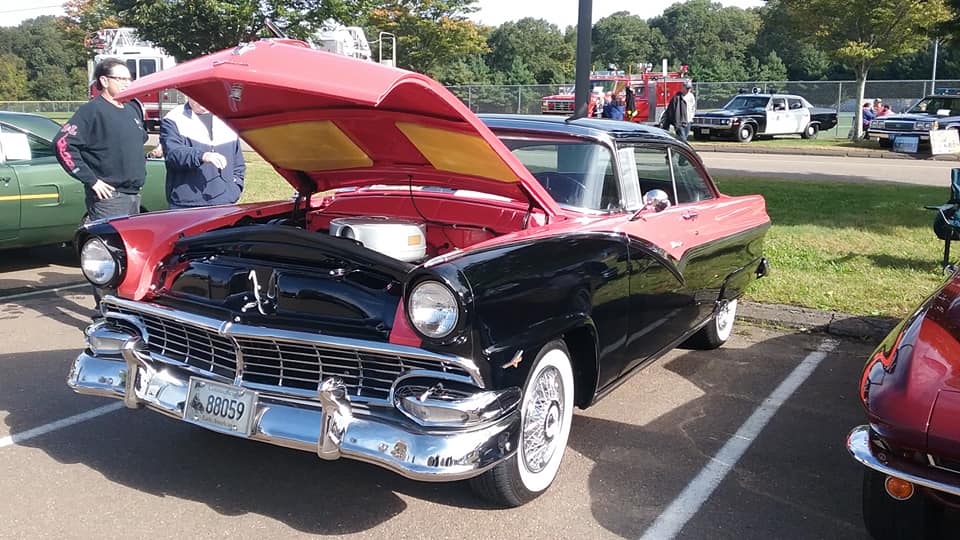
Car: Ford Fairlane Victoria Hardtop
Year: 1956
What makes it special: The Ford line of cars gained a new body beginning with 1955 to keep up with the surging Chevrolet. The 1955 Fords were marketed under separate names for each of the three trim levels: Ford Mainline, Ford Customline and Ford Fairlane. The eggcrate grille featured on the 1955 cars was widened into a series of rectangles for 1956, but this subtle exterior change was nothing compared to Ford’s adoption of a 12-volt electrical system across the line. There were new convenience options, such as a new air-conditioner system, a new heater, and a nine-tube signal-seeking radio. Instead of gauges, instrument cluster warning lights for oil pressure and ammeter were standard.
What made it famous: Ford also began selling “Lifeguard Design” safety features, equipping all models with dished steering wheel, breakaway rearview mirror, and crashproof door locks, padded dash and sunvisors cost extra, as did factory-installed seatbelts. Victoria hardtop coupes now adopted the lower, sleeker roofline used by both 1955 and 1956 Crown Victoria, sans the wide chrome roof trim. Engine choices consisted of the 272 V8 delivering 173 horsepower. A new 312 cid “Thunderbird” unit with 215/225 horsepower was optional across the board, and a midrange 292 cid V8 offered 200 horsepower.
Why I would want one: Absolutely the best-looking body style of the 1950 era Fords. Love the wraparound windshield, moderate use of chrome and potent engine options.
Fun fact: Buyers When it came to the seatbelt options, buyers responded early in the model year, but the rush to seat-belts overtaxed Ford’s supplier, so only 20 percent of the 1956’s got them
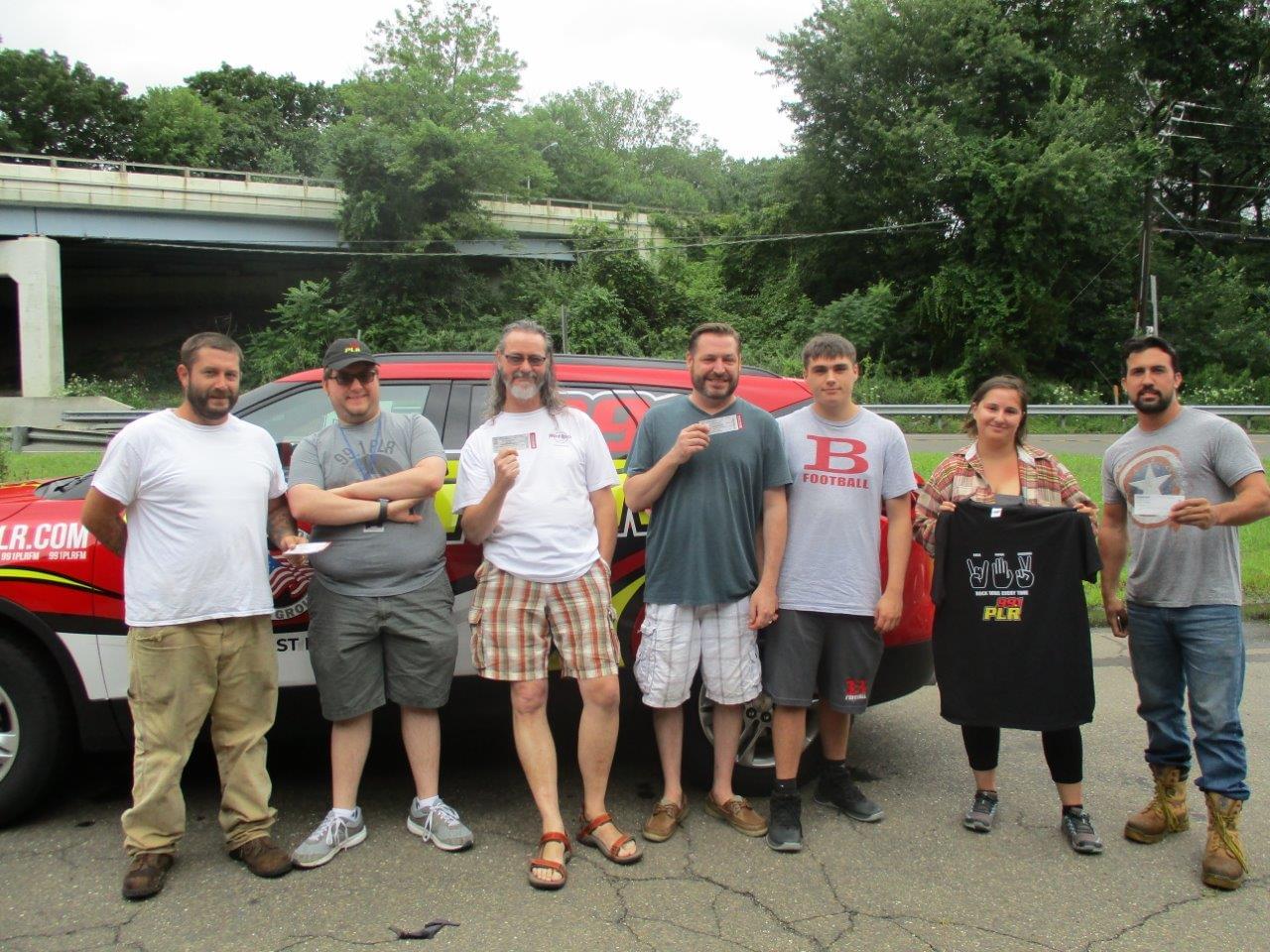
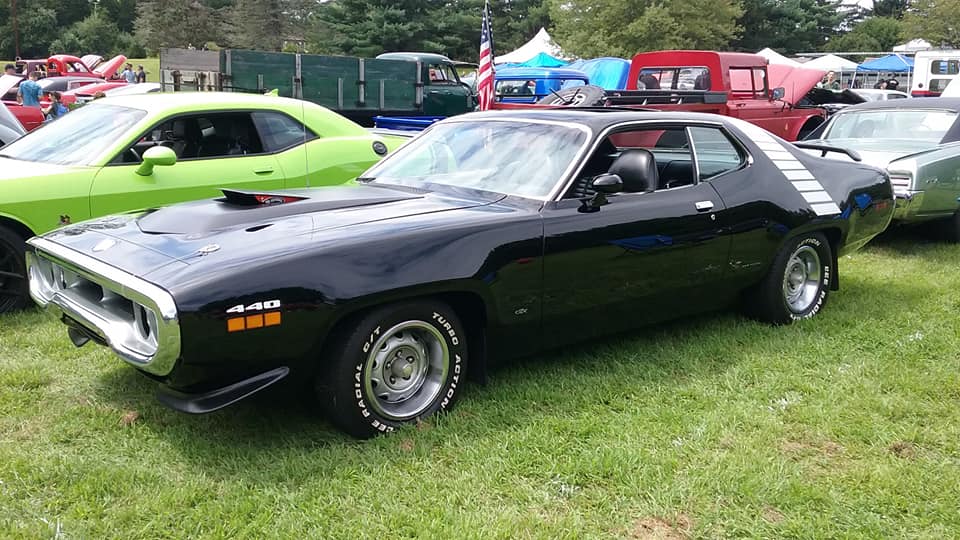
Car: Plymouth Road Runner/GTX 440 Coupe
Year: 1972
What makes it special: Plymouth’s Road Runner was built with a focus on performance between 1968 and 1980. By 1968, some of the original muscle cars were moving away from their roots as relatively cheap, fast cars as they gained features and increased in price. Plymouth developed the Road Runner to market a lower priced, basic trim model to its upscale GTX.
What made it famous: The 1972 model was nearly identical to the 1971 with a few minor changes. The grille design was cleaned up, and the tail lights were changed to match the new aerodynamic look of the grille. The big differences came in the cutting back of performance options for the car. The suspension, rear axle ratios with a 3:55 ratio being the tallest available, and most noticeably the engines changed, with the big-block 383 being replaced by a larger-bore and lower performance 400 cu in version as the standard engine. The small-block 340 CID as well as the performance version of the 440 cu in engine with a 4-barrel carburetor, performance camshaft, and dual exhausts were also available, and for the last time a 4-speed manual transmission could be paired with any of the three engines. All of the engines suffered a drop in compression ratios to allow use of low-lead/no-lead gas and to meet the first round of emissions regulations. The 280 hp 440 engine was the basis for the Road Runner GTX, as the GTX was no longer a separate model, and was available on Road Runners from 1972 to 1974. The famed 426 Hemi was discontinued for 1972, and only five 440 Six Barrel equipped cars were produced before this engine option was dropped after it was determined the 440 six-pack could not meet the stricter 1972 emissions regulations in the fall of 1971.
Why I would want one: Silly as it may sound, but I’ve been in love with this particular Plymouth body style since having an AFX H.O. racing car as a kid.
Fun fact: The 1971-72 Road Runner sheet metal was used by several NASCAR racing teams for their racecars and ran well on the circuit during the 1971-74 seasons. Richard Petty won the championship both in 1971 and 1972 using the Road Runner-based cars, winning 30 races over the two seasons.

6:00. Man steals ambulance, goes to KFC.
6:13. Sports powered by Road Ready Used Cars.
6:20. Chicken so fresh it walked off her plate.
6:30- 6:40. Call in the strange thing you saw for your chance at Steve Miller tickets! 877-764-2535
7:00. Bell stolen from Waterbury church.
7:13. Sports powered by Road Ready Used Cars.
7:20. Dumb Ass News. Woman smashes laptop on boyfriends head for looking at other girls.
7:30 – 7:40. Scot Haney on the phone!
8:00. TJ Miller is in the studio!! He’s at the Ridgefield Playhouse TONIGHT!
8:13. Sports powered by Road Ready Used Cars.
8:20 – 8:40. Why did TJ Miller’s hotel fire alarm go off at 4:30am this morning?
9:00. Billy Joel gives a 14 year old blind piano player an amazing life moment.
9:13. Sports powered by Road Ready Used Cars.
9:20. Dumb Ass News.
9:30. Boss Keith’s Top 5.

6:00. High lites from the Mueller hearing.
6:13. Sports Powered by Road Ready Used Cars.
6:20 – 6:40. Animal Invasions! Bison charges a 9 year old girl. Call in with your animal encounter for Steve Miller tickets! 877-764-2535
7:00. Woman attacks boyfriend on flight for looking at other girls.
7:13. Sports Powered by Road Ready Used Cars.
7:20. Dumb Ass News. Easiest drug bust ever.
7:30 – 7:40. Turning 30. What Ashley needs to know.
8:00. The missing mom’s husband motions to have the charges dropped. Norm Pattis calling in.
8:13. Sports Powered by Road Ready Used Cars. Mama and Papa Gee surprised Ashley in the studio!!!!
8:20 – 8:40. Jimmy Koplik’s top ten most promoted artists!
9:00. Breakfast sandwich with meat but no meat.
9:13. Sports Powered by Road Ready Used Cars.
9:20. Dumb Ass News. Woman pours alcohol down Taco Bell workers mouth.
9:30. Papa Gee and AJ Talk ROCKY!!!